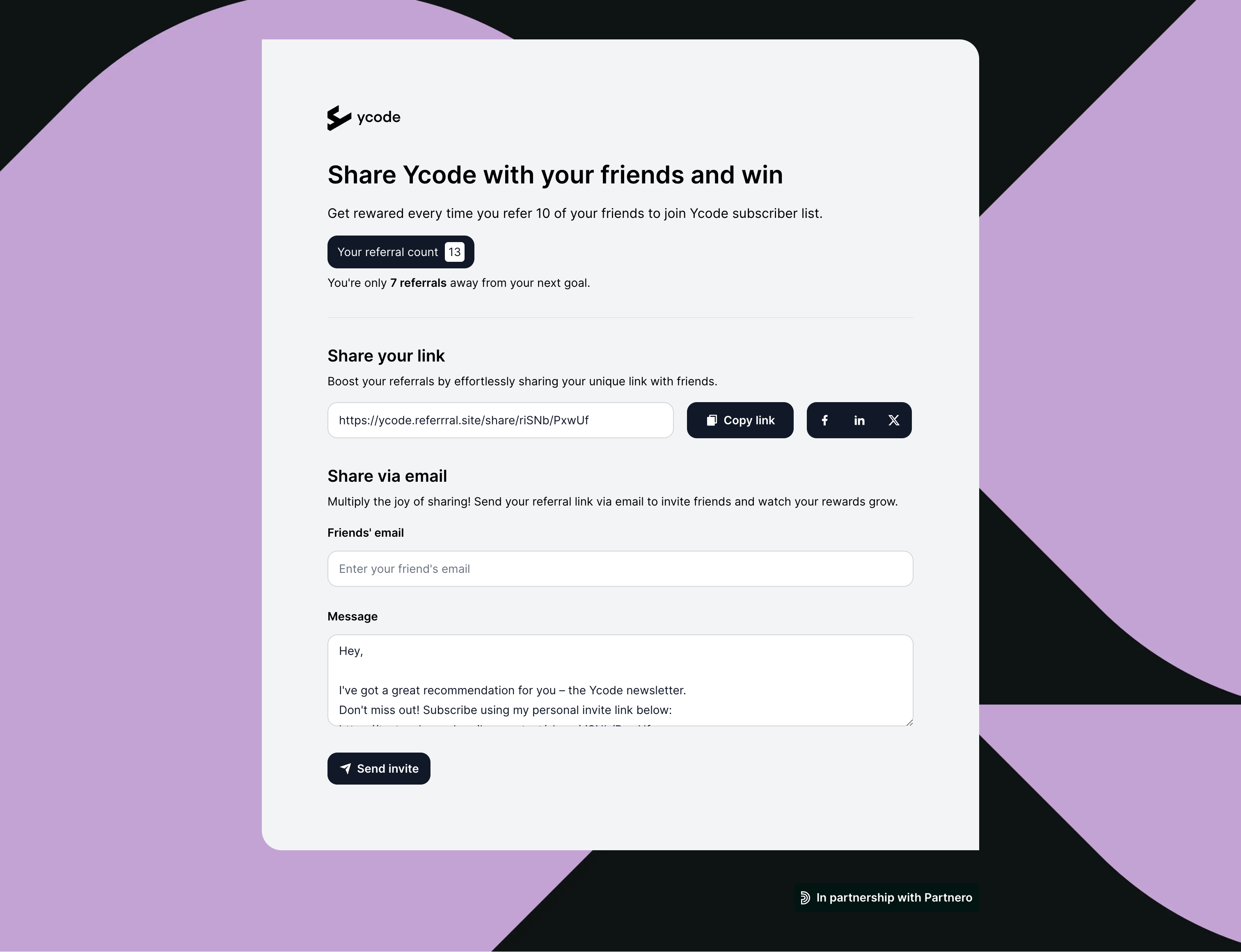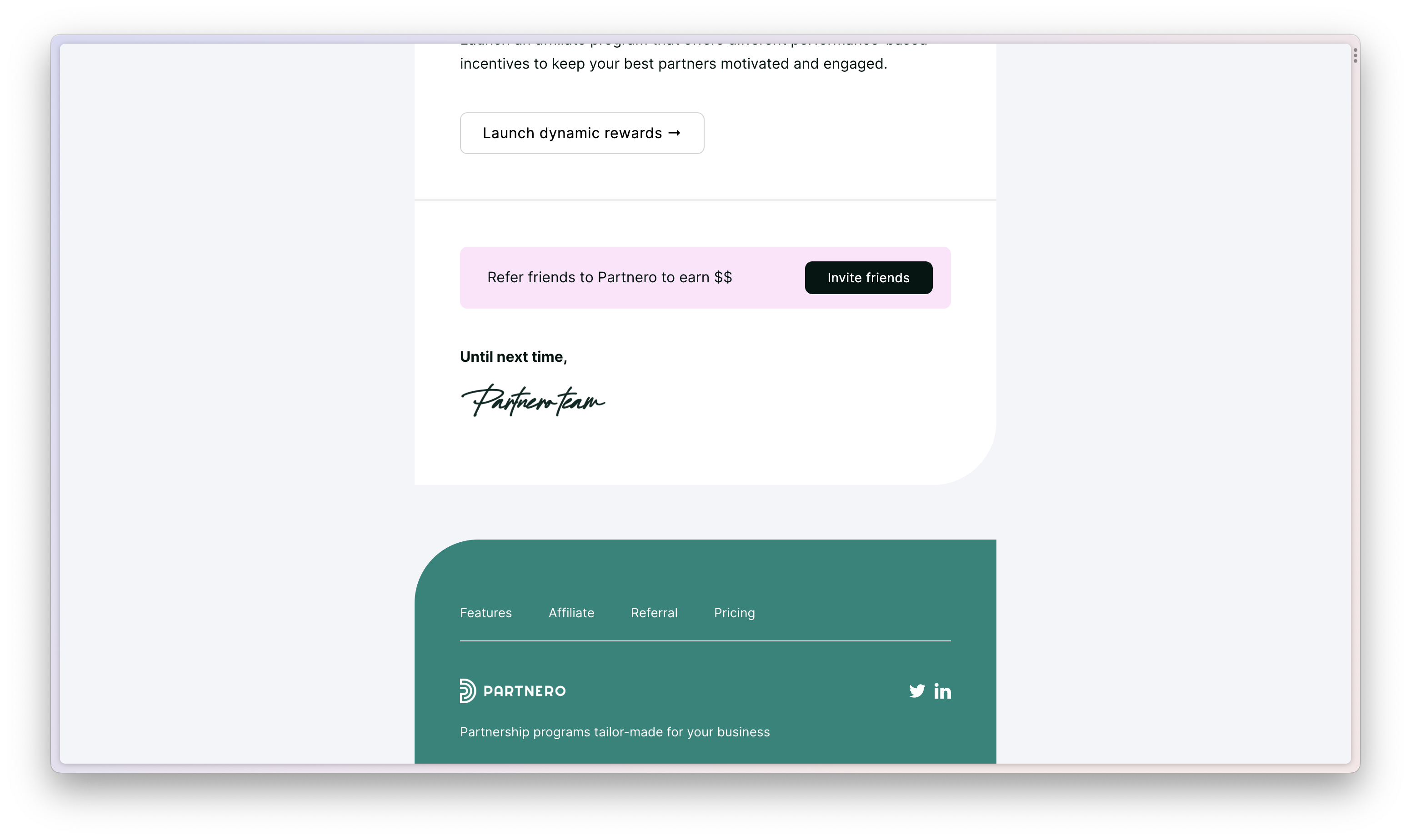How to Run a Referral Program: 5 Do’s and Don’ts

Customer referral programs have become integral to many marketing strategies and campaigns, offering businesses a cost-effective way to increase their reach and acquire new customers. These referral marketing programs also increase customer lifetime value, customer loyalty, and brand awareness.
Quick Definition: A customer referral program is a marketing tactic where businesses reward customers for bringing in new ones.
Whether you’re a seasoned referral marketing manager, marketing manager, or entrepreneur looking to dabble in customer referral programs in the SaaS and e-commerce industries, this guide is for you!
Understanding Customer Referral Programs
At its core, a customer referral program combines digital marketing, customer marketing, and referral marketing into one mighty machine. It is a marketing strategy where existing or loyal customers recommend your content, products, or services to other potential customers.
This is more than just a loyalty or rewards program; it’s also an incentive program. Happy customers are often incentivized through rewards or exclusive benefits, encouraging them to promote your product or service within their networks.
These referred friends are often high-quality new leads and new users. Customer referral programs have an average referral conversion rate of 32%, which is twice the average landing page conversion rate.
The primary purpose of this strategy is twofold. First, it amplifies your brand's reach and customer experience with your brand. Second, it fosters a community of loyal customers actively participating in your brand's growth, somewhat like a loyalty program! These are not just casual readers or users of your content, products, or services; they are brand advocates who drive your business's success.
Let’s dive into the dos and don’ts of running a successful customer referral program.
Five Best Practices for Customer Referral Programs
While there are many types of referral programs and no set template to follow, here are some best practices that can greatly enhance the success of your current referral program.

1. Offer Meaningful Referral Incentives
Referral rewards should be more than just an afterthought—they should be a central part of your referral marketing strategy. When deciding what to offer, remember your audience's needs, preferences and what incentivizes them to share.
You don't have to break the bank with expensive rewards. A study by the American Marketing Association shows that reward size doesn't necessarily increase the likelihood of referrals. Instead, focus on selecting rewards that your audience highly desires.
Consider multiple rewards: discounts, store credit, free products, coupons, gift cards, cash rewards, or exclusive access to new features or products. Providing referral incentives and options encourages more participation and increases the number of referrals among current customers.
2. Personalize Your Referral Program
When marketing your customer referral program, a personal touch in your referral program can make a world of difference. Using a pre-generated message can quickly turn people off sharing to the point of marking it as spam. Tailor the referral messages to resonate with your subscribers, and they will be more likely to share them.
Add their name and personal referral link, mention the rewards they can earn, and count down how many referrals they have to achieve before unlocking their reward. Lastly, thank them for their support to create an emotional connection and foster brand loyalty.
3. Make Referrals Easy To Share
Don't make your best customers jump through hoops to share your referral program. The easier you make the process, the more likely they are to engage, and the more likely they will make their next purchase with your brand.
Embed shareable referral links or buttons directly into your newsletter or allow customers to immediately share your newsletter on their social media platforms or via email. Write a convincing call-to-action (or CTA) to incentivize customers to share! Functionality is key!
4. Leverage Social Proof
Nothing validates a business more than positive feedback from satisfied customers. Showcase testimonials from other subscribers who have benefitted from your newsletter or the referral program.
Referred customers are more likely to share, and this social proof will make others more likely to participate and lower your customer acquisition costs. It’s a win-win situation.
5. Monitor and Optimize Your Program
Finally, track your referral program's performance meticulously. Decide on key metrics. Identify what's working and what's not. Be ready to adjust your strategy based on your findings and always strive for improvement.
Program automation can help, too. Hence, you might want a referral program software or partnership management platform like Partnero to do this.

Additionally, don't be discouraged if things haven't taken off immediately. Nothing's ever perfect, especially on the first try. Stay open to change and adjust as needed until it's just right. Experiment with different referral program ideas to make your customer referral program work.
→ Further reading: Referral Marketing 101: Explore the Power of Word-of-Mouth
Five Mistakes to Avoid in Referral Programs
Now that you know the five most important ways to succeed, let's delve into what not to do when running a customer referral program.

1. Overcomplicating the Referral Process
Your referral program should be user-friendly, with a clear and easy-to-follow process. If it's too complicated, your customers will likely abandon it midway.
People don't like to fight for the right to share your content, products, or services with others. No matter how valuable your rewards might be, having to fight to earn them will result in most people not finding them worth the hassle.
The best referral programs make it easy to share - whether it’s a referral landing page, a referral link, or a button to share on social, one click is the way to go.

2. Lack of Promotion
It's not enough to make a referral program; you must promote it. Regularly remind your subscribers about your referral program and elevate its visibility through periodic announcements on social media, landing page pop-ups, email reminders, or special promotions to keep it on top of your subscribers' minds.
Like many marketing tactics, while you shouldn't go overboard and blast them with advertisements every hour of the day, your goal is to make sure that they're aware the program actually exists. This is the only way current customers will participate and use it.
Partnero, for example, reminds their readers to sign up for their referral program in every email.

3. Ignoring Feedback
Customer feedback is priceless. After all, a referral program that no one likes probably won't be getting many referrals. It will help you improve your program and make your subscribers feel valued and heard, leading to increased customer loyalty.
It’s okay to make mistakes. Don’t be afraid to experiment with different referral program ideas based on customer feedback to make your customer referral program work. What makes your customers want to refer a friend or family member? Get to the core of this!
4. Setting Unrealistic Goals and Lack of Referral Tracking
Setting sky-high goals can lead to disappointment. Be realistic when setting targets and metrics for your referral program. Start small, measure results, and adjust your goals over time. As your success grows, so can your new goals.
Some metrics to consider include number of referrals and referral engagement rates. Are new referrals sharing their referral links? How many referral links result in conversions? How do you define conversions? These are just some metrics to keep in mind.

You should also consider automating referral tracking with a partnership management platform. Without proper tracking, how can you ensure accountability? More importantly, how can you identify areas of improvement and measure the success of your customer referral program?
→ Further reading: 15 Essential Referral Program Metrics to Improve ROI
5. Neglecting Existing Customers for New Ones
While attracting new subscribers is important, don't forget to nurture your existing ones. Remember, they're the backbone of your customer referral program, and continually rewarding them is key to maintaining loyalty. Make your rewards two-fold and reward both existing and new customers.
Like Wise, you can even increase the amount of payouts at different times of the year to give your best customers a little more! Figure out what your best customers would like on top of new customers. Segmentation could go a long way.
The Role of Successful Referral Programs in Retaining Customers
A successful referral program doesn't just attract new customers—it also helps retain existing ones. By providing rewards and recognition, customers feel appreciated and will likely stay loyal. This boosts both your subscriber count and customer retention rate.
Referral programs should be in a CMO’s arsenal of marketing campaigns. Including a partnership management platform in a CMO's toolkit is essential.
A well-executed referral program can be a game-changer for your business. It can help boost your brand’s reach and profits from attracting new customers to keeping old ones. Making sure that you adhere to the dos and avoid the don'ts can make all the difference in whether your program sinks or swims.
Manage Customer Referral Programs with Partnero
Now is the time to put these best practices into action. Begin by equipping yourself with our all-in-one partnership management platform and take your customer referral program to new heights.
From tracking referrals to white-label partner portals, we want to be a part of your referral marketing success story and go-to-market tech stack. Sign up for a free trial and try it out.
Referral Program FAQ
A customer referral program is a marketing strategy where businesses encourage existing customers to refer friends or colleagues in exchange for rewards. It leverages trust and word-of-mouth to drive new customer acquisition.
The most common mistakes include:
Offering weak or irrelevant incentives,
Making the referral process too complex,
Failing to promote the program,
Ignoring customer feedback,
Not tracking referrals properly.
These issues reduce engagement and ROI.
Successful referral programs are simple, rewarding, and easy to share. They offer clear benefits to both parties, integrate well with your product or service, and use tracking tools to measure success and automate rewards.
The best incentives are double-sided—rewarding both the referrer and the new customer. Common examples include discounts, store credits, free upgrades, or cash. Choose incentives that align with your product’s value and customer needs.
You can track success using referral software like Partnero, which provides real-time analytics on referrals, conversions, and reward distribution. Monitoring these metrics helps you optimize your program and maximize ROI. Read more.